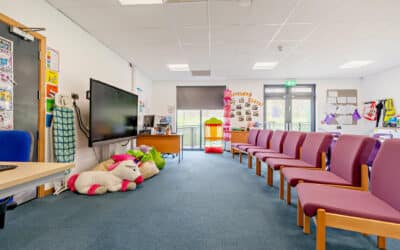TG Escapes Blog
Eco friendly tips in the classroom
School buildings are one of the biggest collective consumers of energy and, conversely, one of the largest generators of waste and pollution in our economy. In addition, largely due to the age of many of our school buildings, internal environmental conditions are often poor and air quality is unsatisfactory.
As climate change threatens the future of our planet and the rise of modern medical epidemics such as obesity and Type 2 diabetes threatens the future health of this generation of children, it has never been more important for schools to do their best to both reduce their carbon footprint and teach students the skills to enable them to lead healthy, sustainable lives.
Here are a few suggestions (some easier to instigate than others) to allow your class of potential eco-warriors to help themselves and the environment, without costing the earth either literally or figuratively.
- Create a recycling centre. A few extra bins in each classroom and a bit of time to organise teams of recycling monitors to ensure that the system is used correctly and you are good to go. Ensure that one of the bins is used exclusively for reusable scrap paper and use it as the first port of call for any rough workings.
- Make a green data display. At the end of each week, the team responsible for that week should collate the data of how much material has been recycled: count empty bottles, weigh scrap paper or other recyclable materials and hone data analysis and graphing skills. Maybe throw in a little incentivisation scheme to encourage reduced consumption.
- Enjoy the fresh air. Open windows whenever the weather permits, and when it doesn’t ensure that all vents are kept clutter free to facilitate good airflow and improve energy efficiency.
- Declutter. As in any home, it is very easy to become used to piles of clutter in a variety of corners and nooks and crannies: ideal for gathering dust and cultivating mould. Not so great for air quality.
- Add some plants. Not only will this bring a little bit of natural beauty into the classroom, but it will also serve to purify the air. Bamboo and rubber plants are both easy to keep and great natural air filters.
- Power down all electrical equipment, every day. Turning off all computers instead of leaving them in sleep mode will substantially reduce energy consumption. Create a green team to spend the last few minutes of the day switching everything off, including checking that all the taps are fully closed. Oh yes, they could also check in on the plants.
- Plant a school garden. There is no denying that this is a big project to get off the ground, but the benefits are bounteous. It gets students outside, connecting with nature in a very real sense and gives ample opportunity to learn about sustainable food sources and ecosystems. Even the most health food averse are likely to be tempted to eat the fruits (and veg) of their labours!
- Organise a local food day. Invite local food producers (farmers and restaurants with a local sourcing ethos) to bring along some samples of locally available produce and talk about the importance of reducing food miles.
- Mobilise parents to car pool. They’ll save money and time, whilst doing their bit to conserve the environment and improve safety for all. Better still, encourage those who live close enough to take turns leading a walking bus: all who participate will get some energising, early morning exercise into the bargain.
Teaching Our Future Environmental Citizens
Even just one of these projects will help to steer children onto the right track. If we are to raise a generation of children who are not only concerned for their environment, but are to be our future ambassadors for change, then we must engage them with environmental studies, incorporating the values into their daily lives. For more information about the importance of a connection with nature and environmental citizenship, follow this link to a whitepaper commissioned by TG Escapes, “The Outdoor Environment in Secondary School. Understanding nature deficit and environmental citizenship.”
If there are funds available for adding extra classroom space, one of the easiest ways to improve energy efficiency is to choose an eco-classroom provider. The environment (both in terms of global sustainability and a healthy interior) will have driven the entire design process. The Learning Escape buildings, with maximum natural light penetration, smart lighting and high insulation values, create buildings with a highly rated EPC which also happen to cost a fraction of a more traditional bricks and mortar extension.

About the author
More posts from our blog
TG Escapes partner with Class of Your Own’s ‘Adopt a School’ Scheme
We're thrilled to announce a landmark collaboration between Stratford upon Avon School, a beacon of the Design Engineer Construct! (DEC) Learning Programme, and TG Escapes. This partnership fostered through Class of Your Own’s 'Adopt A School' scheme, marks a...
Student engagement day at Beacon Hill School
Two members of the team recently had the privilege of showing students and staff around our latest project nearing completion, at Beacon Hill School in Wallsend. The school is North Tyneside’s specialist provision for children with severe learning difficulties that...
The Design Essentials of a Modern SEND Classroom
There is a desperate need for quality new buildings across UK schools, but special schools are in a particular crisis thanks to rising needs and inadequate funding, with an urgent need for buildings that offer children with complex needs a comfortable and safe space...



